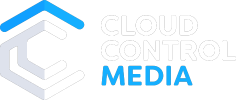How to Use PPC Campaigns to Enroll More MBA Students
In the competitive space of MBA enrollments—particularly for online programs—you need to effectively leverage every weapon in your digital marketing arsenal to find and enroll new students. Pay-Per-Click (PPC) campaigns can help, but only if you comprehend the multidimensional layers of strategic PPC management. From immersing yourself in the higher education PPC ecosystem to mastering the art of ad crafting for maximum engagement, you need to explore the options that will provide the most promise to enhance your campaigns’ performance. What role does audience segmentation play in optimizing your ad spend? How can analytics drive smarter, data-informed decisions in real-time? Check out our comprehensive guidelines to a better PPC for MBAs.
Analyze Higher Education Keyword Competition
MBA keywords are competitive and expensive. To launch effective campaigns, you need to conduct a thorough keyword competition analysis. Pinpoint keywords that are valuable without being adversely competitive and prohibitively costly. That means you need to examine search trends, investigate competitor strategies, and consider the search intent of prospective students. For example, targeting specific phrases like “part-time MBA nearby” or “executive MBA courses” could yield more qualified and affordable leads than the broader “MBA programs.”
Review PPC Cost Dynamics
Cost dynamics play a significant role in shaping PPC strategies. The cost per click (CPC) for education-related keywords is on the rise, making optimized spending essential. Implementing strategies such as dayparting (scheduling ads to run during optimal times) and geo-targeting, while enhancing your Quality Score can help manage costs effectively. By diligently connecting ad relevancy to your landing pages, you can improve your Quality Score and lower bid costs.
Segment Student Audiences for Tailored PPC Campaigns
Audience segmentation helps you understand the diverse needs of prospective students so you can craft campaigns that cater specifically to those needs. For example, the student who continues straight from a bachelor’s degree to an MBA would be one segmented audience. Another might include professionals seeking executive MBA programs. Still another might target international students interested in specific accreditations. Effective segmentation leads to more personalized ad campaigns, which are more likely to capture the interest of the target audience and get the results you want.
Craft Strategic MBA Ads for Maximum Engagement
Your ads need to stand out from online clutter. Compelling ads are essential for successful higher ed PPC campaigns. You need visuals that conform to institutional brand guidelines but also push the envelope. And the copy needs to grab user attention with a clear and concise call-to-action (CTA). Your message should also effectively communicate what differentiates your MBA program from all others. Is it your institutional reputation, distinguished faculty, unique curriculum, or program flexibility. And what is the end goal of your prospective students? Consider their aspirations and challenges and how you can help them overcome obstacles to achieve their goals.
Produce Stellar Landing Pages for PPC Campaigns
A well-designed landing page improves brand reputation, user experience, and conversion rates. It should succinctly provide all necessary information about your MBA program, differentiate your offerings, and include strong CTAs. Visual elements like campus images, student testimonials, and infographics about program outcomes can further enhance engagement.
Refining PPC Campaigns with A/B Testing
A/B Testing is a data-driven technique to optimize your PPC campaigns. By testing different versions of ad copy, visuals, and landing pages, you can determine what resonates best with your audience. Some key elements to test include:
- Headline variations
- CTA wording and placement
- Button colors, size, and shape
- Images and video content
- Landing page layouts
Set Goals and Leverage Analytics for PPC Campaigns
You can’t produce great results if you don’t set goals, measure conversions, and adjust campaigns based on analytics. By establishing specific conversion goals, such as form submissions, brochure downloads, and virtual or on-campus visits, you can better pinpoint which ads generate interest, applications, and enrollments. Your data facilitates a detailed analysis of campaign performance and offers insights into user behavior and preferences.
Conduct ROI Analysis for PPC Campaigns
ROI analysis connects your PPC campaigns directly to the tuition revenue they generate for the programs you promote. By calculating the cost-per-acquisition and comparing it to the lifetime value of a student, you can determine whether your PPC spend leads to tangible enrollment increases. A full analysis can prove the value of PPC for MBA enrollments and can justify an increased digital marketing budget, that in turn can produce more enrollments.
Optimize PPC Campaigns to Improve Enrollment Yield
Based on your data and analysis, make real-time optimizations to sustain the effectiveness of your PPC campaigns. Continuous campaign monitoring lets you adjust to performance fluctuations or test new opportunities. On any given day, you may reallocate budgets toward high-performing keywords, pause underperforming ads, swap out creative, or modify ad schedules based on user engagement patterns.
Explore Alternate Targeting with PPC Campaigns
Because many MBA programs have geographic limitations, such as in-person classes or residency requirements, geo and local targeting can help you better attract right-fit students to your programs. Even online programs tend to attract students within a certain geographical location. Tailor your messaging to very specific regions, using colloquial language and local references. The more personalized and relevant your messaging, the more likely it will resonate with your intended audience and get them to respond in the way you want.
Integrate PPC Campaigns with Other Digital Marketing Efforts
PPC campaigns perform particularly well when they are part of an omnichannel approach. Use PPC with other digital marketing strategies to ensure brand consistency, cohesive marketing, and maximum ROI. When you align PPC with SEO, for example, you can better optimize spend. Because MBA-related keywords can be so expensive, having your SEO team target longer-tailed keywords that answer user queries can augment your paid efforts. Also, insights gathered from PPC campaigns, such as just which keywords are the most expensive, can help you optimize spend across channels. It’s a win-win.
Navigating the complexities of PPC campaigns in the competitive field of MBA enrollment requires strategic, data-driven tactics that are innovative and client-centric. CloudControlMedia takes that exact approach. If you’re ready to enroll more students into your MBA programs, contact our paid media team today. We can start with a complimentary audit of your existing campaigns and then explain the potential we see in your future. Reach out today.
~Linda Emma, Storyteller-in-Chief




















